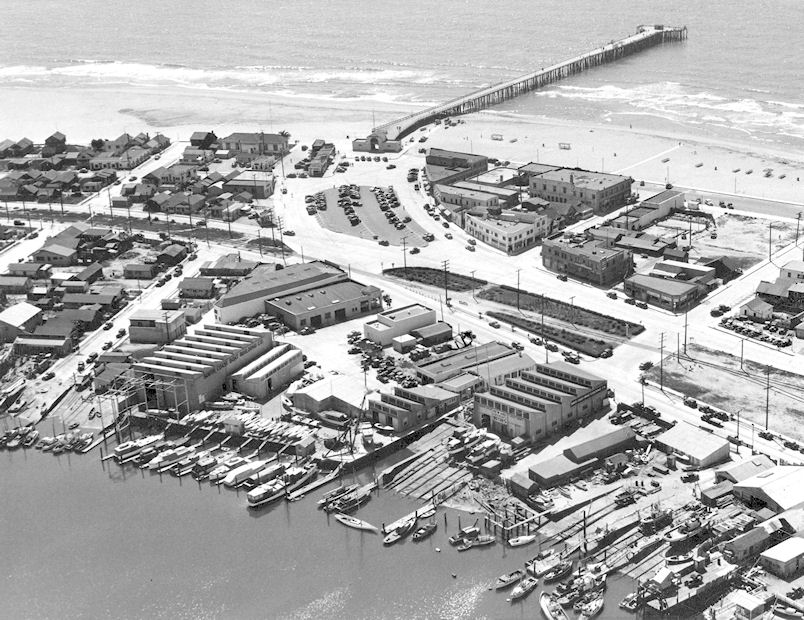Downtown Newport Beach and the new pier, circa 1940s (Courtesy the Orange County Archives).
Early Newport Beach
The history of Newport Beach really begins in 1870, when the first commercial vessel steamed into the bay to establish a “new port” between San Diego and Los Angeles. The original landing was at Castaways Bluff, about where the Coast Highway crosses the bay near Dover. After the McFadden brothers took over the operation around 1874 it was usually known as McFadden’s Landing.
But the inside landing created all sorts of problems. The bay was very shallow, and the channel was always changing as sandbars moved around. The mouth of the bay was especially dangerous, and several men were killed over the years taking soundings there. So in 1888 the McFaddens built a wharf out into the ocean, where large sailing ships and steamers could tie up. In 1891 they added their own railroad – the Santa Ana & Newport – to move cargo inland. The old inside landing was abandoned, and most everybody moved over to the foot of the wharf on the peninsula (some of the buildings were actually floated there across the bay at high tide). This was the start of old downtown Newport Beach as we know it today.
Like a number of our local communities, things began to pick up in 1905 with the arrival of the Pacific Electric’s “surf line” down the coast from Long Beach. New subdivisions opened around the bay, including Corona del Mar and East Newport in 1904, Balboa in 1905, and Balboa Island in 1906.
With the exception of Bay Island, all of the islands in Newport Bay are pretty much man-made. Most of them started out as low-lying mudflats that would disappear at high tide. But local developers built them up by dredging the bay and started selling lots.
This burst of civic improvement led to the incorporation of the City of Newport Beach in 1906. It originally took in everything on the peninsula, along the Coast Highway (which didn’t open until 1925), and what would become Lido Island. Balboa Island, Corona del Mar, and the other island only came in later. The incorporation petition claimed there were 700 residents in the proposed city, but there were only 75 registered voters. Most of the others were probably only summertime residents. In 1906 the Los Angeles Times reported there were 1,000 vacationers staying in Newport Beach that summer.
Because Newport Beach was part working seaport, part railroad town, and part vacation destination in the early days, it had a varied population, from working-class fishermen to high-end Los Angeles businessmen who kept summer homes there. The Southern Pacific acquired control of the railroad in 1899, and service slowly dwindled away until it was finally abandoned in 1933. Commercial shipping ended around 1906, and the old wharf was finally destroyed by the hurricane of 1939 and the current pier built in its place. After several false starts, the jetties were built at the harbor entrance and the bay was thoroughly dredged in 1936. But instead of a commercial port, it became a pleasure boat harbor.
